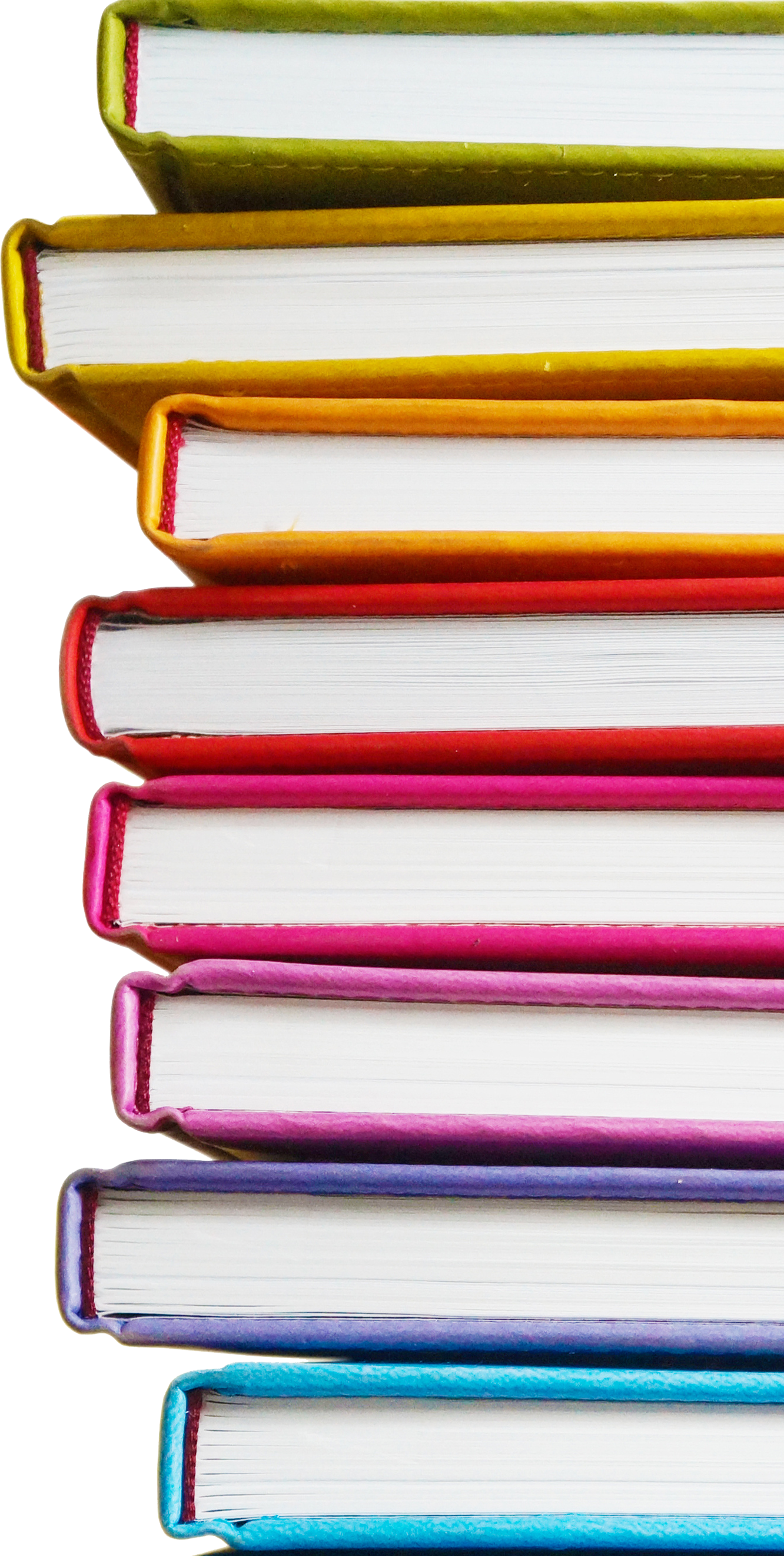ascender the part of a letter extending above the x-height
back cover copy (bcc) the blurb on the back cover
blad advance information on a book, including sample pages and sales information
bleeds when the print, usually images, runs over the edge of the page
blurb information about a book
bromide glossy photographic print
bulk the thickness of a sheet of paper or a book
by-line the name of the author(s) and major contributors
casebound hardback
cast-off the number of words in a book, which used to have to be calculated
chapter breakdown a list of the chapters in a proposed book and notes on what they contain
CMYK cyan, magenta, yellow and black – the four print colours – using K instead of B so it is not confused with blue
co-edition an agreement between two publishers to publish a book in two different languages; usually changing only the black plate
coated paper paper with a smooth, shiny surface
copyright the person who owns the text and images; determined by the contract terms
cross-head a subordinate heading to break up the text
descender the part of a letter extending below the x-height
dpi dots per inch, designating the quality of an image, usually 300 dpi for printing
dps double-page spread
dummy a mock-up of a book using blank, or mainly blank, pages
EAN European article number, the same as the ISBN
em rule a measurement equal to the point size of a font; in general a pica, or 12pt, em is about 1.6mm
en rule half an em and the average width of the type characters in a font; it is used as a spaced rule instead of parenthesis or for instances that mean ‘to’ (15–30 ml, London–Brighton race)
endpapers separate sheets at the front and back of a hardback book pasted to the cover
extent the number of pages making up a book, traditionally in units that represented the number of book pages that could be printed on a sheet
flatplan a page-by-page plan of a book
folio page number; every book starts with page 1 on the right-hand side, so odd numbers are always the right-hand side of the spread
font a complete set of type of a given design
fore-edge the outer edge of a page
foreword introductory matter usually written by the an expert in the subject other than the author
free-flow text in electronic formats that re-runs as you change the dimensions of the window
full point full stop
gutter the central margins along the spine
half-title page a page at the front of the book containing just the title
imposition the arrangement of pages on a sheet so that they appear in the right order when printed and folded
imprint the publisher’s name under which the book is published
imprint page usually page 4 of the book (after the half-title and the title spread), containing the publisher’s details, ISBN, copyright notices, printer and other information
indent move the text to the right so there’s a white space at the start of the line
InDesign the industry standard design program
ISBN International standard book number, which identifies any specific book; UK numbers begin 978, followed by four digits for the publisher, then a five-digit book number followed by a check digit
jacket a paper wrap-around that goes over the cover
jpeg or jpg joint photographic experts group, the most common file format for images
justify to space the words so both left and right sides are even
kerning adjusting the space between characters
landscape a book size that is wider than it is tall
layout design showing the text and images in position
leading additional spacing between lines of text
manuscript the original text of the book, usually in the form of a Word document
measure the length of a line
mono single colour
orphan a single word on a line at the end of a paragraph
out-turns a print-out of the book before binding
overmatter text that exceeds the space available
pagination how the text fits within the pages of the manuscript, allowing the book to meet its target extent
pdf portable document format, a stable file format that provides an electronic image of text/graphics/pictures
pixelate when an image breaks down into pixels or tiny squares
pixels the tiny squares that make up a digital image
plc printed laminated cover
portrait a book size that is taller than it is wide
preface introductory matter usually written by the author
prelims the preliminary pages at the front of the book, comprising the half-title, title, imprint, preface, foreword and contents
print run the number of copies to be printed
proof correction marks standard symbols for correcting proofs
proofs print-outs or pdfs of a book in progress for checking purposes
range left to align lines to the left margin
range right to align lines to the right margin
recto the right-hand page of a book
reverse out text white out of black (or light out of dark)
RGB the colour mode for an image to be displayed onscreen
running heads / feet headings at the top / bottom of a book page giving the book, chapter or section name
sans-serif a plain font like Verdana with no little ‘ticks’, or serifs, on the ends of the letters
self-ends when page 1 and the final page are pasted to the cover
serif a font like Palatino that has little ‘ticks’, or serifs, on the ends of the letters
signature most books are bound in sections – or signatures – of a set number of pages, commonly 32
small caps capital letter forms but only as big as the x-height
smart quote a curly apostrophe (as opposed to a straight one)
specifications details of a book: extent, trim size, binding, illustrations, colour, ISBN, etc.
sub-head a subordinate heading to break up the text
synopsis an outline of a proposed book
tiff tagged image file format, used sometimes for images
title page page containing the title of the book, the author(s) and publisher or imprint
TPS trimmed page size
trim allowance text printed on the page should be at least 10mm from the trim to avoid being cropped when the book is trimmed
trim size the page size of the book
unjustified ranged left – to align lines to the left margin
USP unique selling point
verso the left-hand page of a book
widow the last short line of a paragraph appearing at the top of a page
wraps colour pages bound around the mono signatures of a book
x-height the central part of a font without ascenders or descenders




